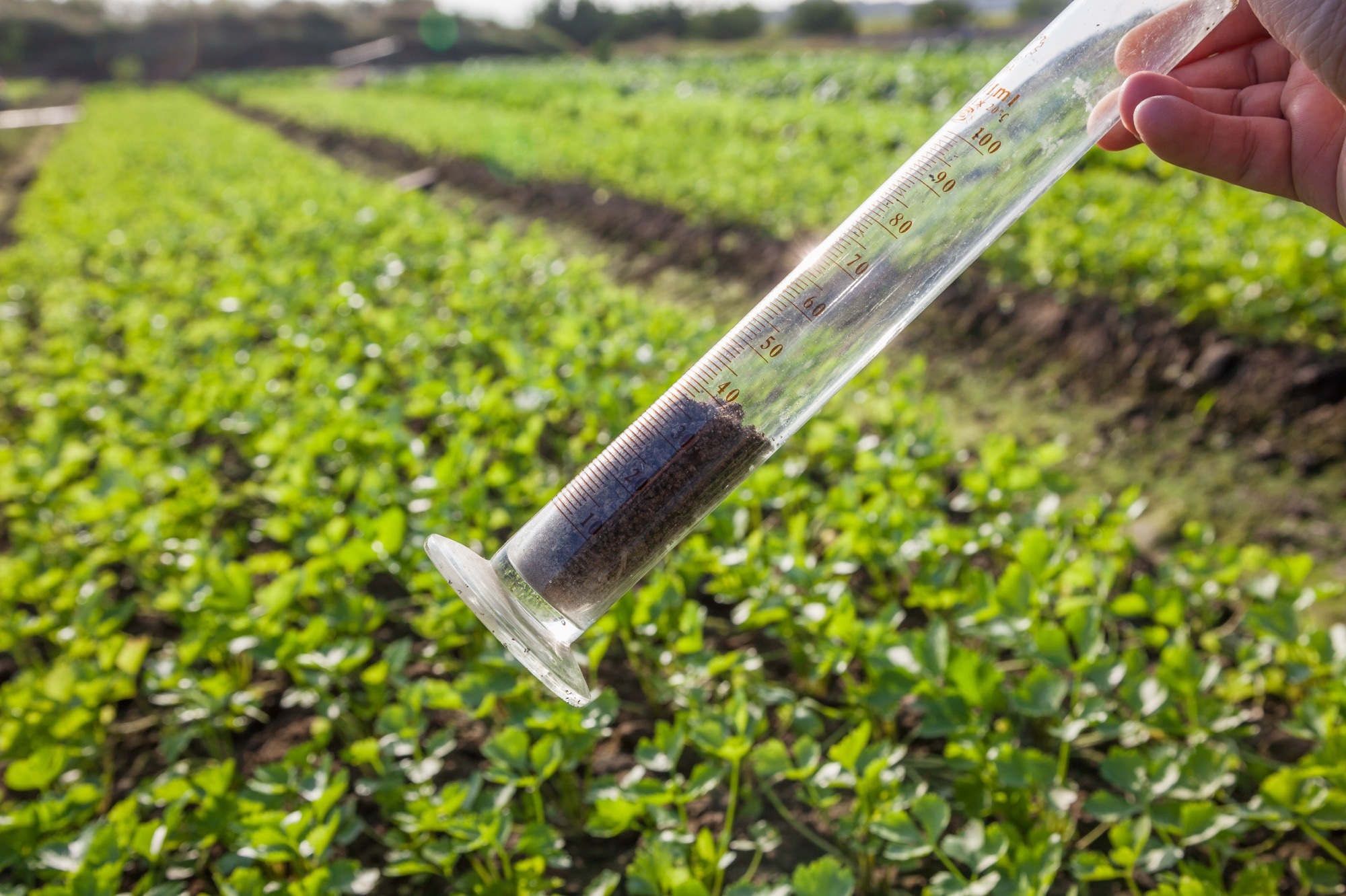Microbial cover crops is an agricultural technique when a plant cover crop, such as alfalfa, is grown during the off-season and plowed into a field to enrich the soil before planting the actual crop intended for farming. In this episode, Barry Goldman, founder and CSO of Pluton Biosciences, presents a new and innovative approach to improving soil health and sustainable agriculture in relation to this method.
It all started with Goldman and his team devising a way to add ammonia to the soil from the atmosphere and trying to determine which bacteria could do this effectively, particularly around nitrogen fixation. This draws attention to the fact that since the 1950s, the world’s population has expanded from around 3 billion people to 8 billion.
 Image Credit: Humannet/Shutterstock.com
Image Credit: Humannet/Shutterstock.com
Goldman claims that this is in part due to the use of synthetic fertilizers, i.e., ammonia produced via the Haber-Bosch process, which has helped feed a significant proportion of the ever-growing global population. Yet, that same process generates significant amounts of greenhouse gas as well.
Finding another way to add nitrogen to the soil and avoiding any undesirable side effects is therefore crucial. Goldman claims, “If you can imagine it, a bacterium is already doing it.”
The scientists at Pluton Biosciences started with a soil sample containing about 10,000 different species, and from there, they were able to identify a consortium of various bacteria that will grow in the absence of carbon and nitrogen except for that which they can pull from the air.
This consortium works together, drawing in energy from the sun to break down CO2 and transforming it into usable energy sources (photosynthesis) and bonding nitrogen-fixing bacteria to ammonia in the soil, which can be leveraged to synthesize amino acids, etc.
Another benefit of using microbial cover crops at scale for nitrogen fixation is that it is possible to sequester large amounts of carbon dioxide from the atmosphere.
“If you could now take this on a hundred million acres, you removed a hundred million tons of CO2 per year... you can start tackling this and give ourselves more time to come up with even better solutions,” explains Goldman.
“We also believe we can put on 30 pounds of nitrogen per acre. So now, if you’re on that for that much, you’re essentially almost turning the amount of the Haber-Bosch process to zero. That’s roughly 20 percent of the greenhouse gases that are being emitted. You put those two together, now you have a massive impact on climate change,” he added.
What Would it Take to Bring This Potential to Reality?
As with all areas of life science, ensuring safety and efficacy is crucial. Thus, the consortium of bacteria in the field would need to be tested. As this bacteria has not been genetically modified, the EPA would need to be assured that the individual elements that make up the consortium have been clearly identified and are present wherever they are intended to be employed.
The next challenge is convincing farmers to test them in their fields or at least offer a portion thereof. Typically, most will want assurances that they will be compensated if there is any reduction in yield and that they will be paid for their efforts.
Testing in real-world environments is vital to prove that these microbial cover crops work as claimed. This necessitates several different phases, starting with a limited area and expanding towards production scales once efficacy and safety have been demonstrated.
Remarkably, the bacteria produce a crust that is visible on the soil’s surface. As a result of this outcome, drone technology and machine vision could be utilized to monitor the fields and obtain relevant data on microbial cover crop performance.
However, all of this requires two of the most precious resources: time and money. If the consortia work as intended, the farmer gets value from savings on synthetic fertilizer. Then there is also the carbon market to consider; as it stands, each ton of carbon sequestered per acre amounts to around $15-30.
Goldman is keen to point out that this is not a complete solution, but microbial cover crops demonstrate great potential to put a large dent in greenhouse gas emissions. This could give us more time to develop solutions for addressing climate change.
About Life Science Marketing Radio
Life Science Marketing Radio is connecting life science professionals with the brightest minds and best thinking in the industry to grow their network and advance their careers.
Stay on top of new technologies around life science and embark on a journey to learn as much as possible on artificial intelligence, machine learning, and more.
Sponsored Content Policy: News-Medical.net publishes articles and related content that may be derived from sources where we have existing commercial relationships, provided such content adds value to the core editorial ethos of News-Medical.Net which is to educate and inform site visitors interested in medical research, science, medical devices and treatments.